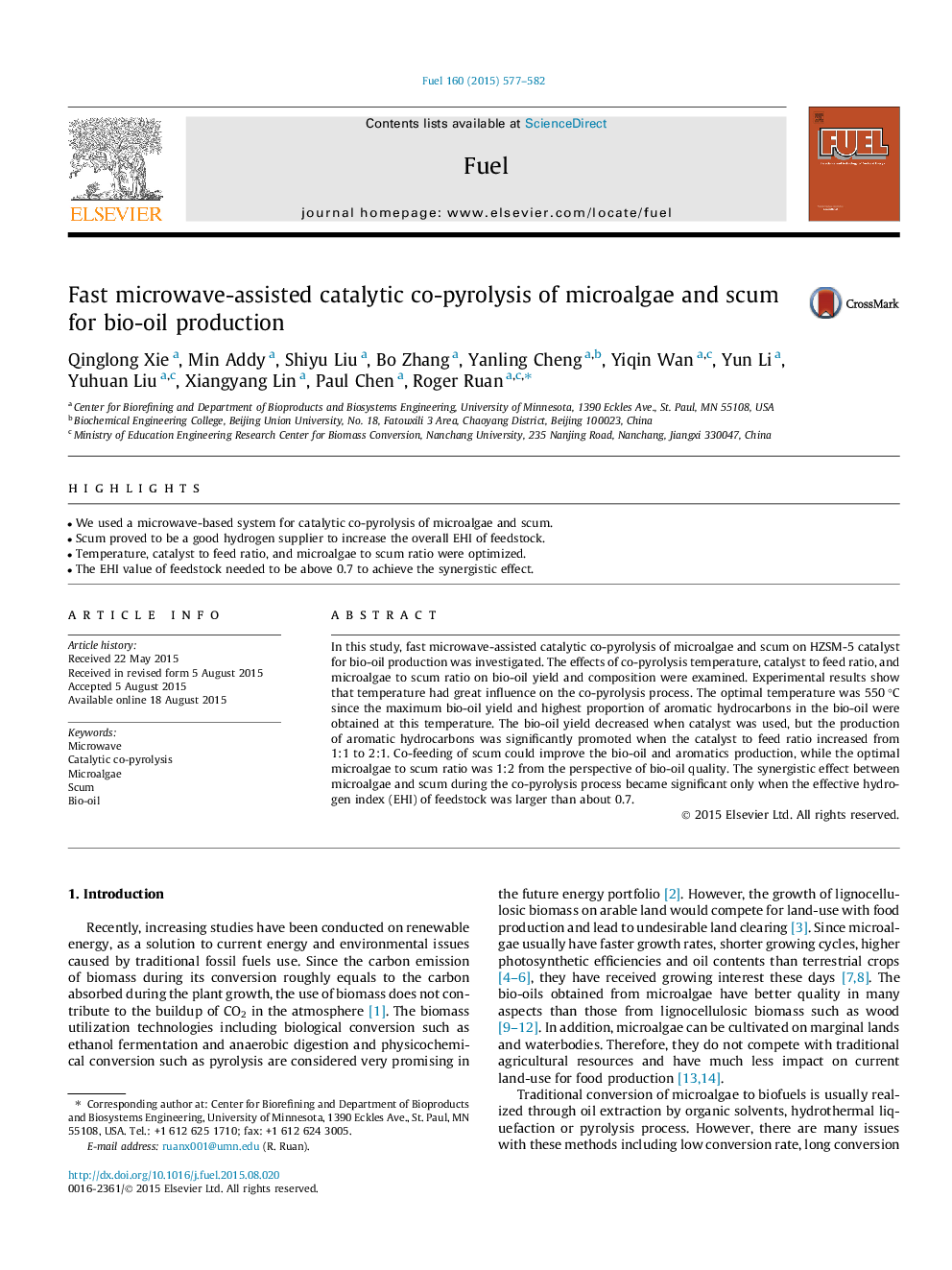| کد مقاله | کد نشریه | سال انتشار | مقاله انگلیسی | نسخه تمام متن |
|---|---|---|---|---|
| 205581 | 461112 | 2015 | 6 صفحه PDF | دانلود رایگان |
• We used a microwave-based system for catalytic co-pyrolysis of microalgae and scum.
• Scum proved to be a good hydrogen supplier to increase the overall EHI of feedstock.
• Temperature, catalyst to feed ratio, and microalgae to scum ratio were optimized.
• The EHI value of feedstock needed to be above 0.7 to achieve the synergistic effect.
In this study, fast microwave-assisted catalytic co-pyrolysis of microalgae and scum on HZSM-5 catalyst for bio-oil production was investigated. The effects of co-pyrolysis temperature, catalyst to feed ratio, and microalgae to scum ratio on bio-oil yield and composition were examined. Experimental results show that temperature had great influence on the co-pyrolysis process. The optimal temperature was 550 °C since the maximum bio-oil yield and highest proportion of aromatic hydrocarbons in the bio-oil were obtained at this temperature. The bio-oil yield decreased when catalyst was used, but the production of aromatic hydrocarbons was significantly promoted when the catalyst to feed ratio increased from 1:1 to 2:1. Co-feeding of scum could improve the bio-oil and aromatics production, while the optimal microalgae to scum ratio was 1:2 from the perspective of bio-oil quality. The synergistic effect between microalgae and scum during the co-pyrolysis process became significant only when the effective hydrogen index (EHI) of feedstock was larger than about 0.7.
Journal: Fuel - Volume 160, 15 November 2015, Pages 577–582
